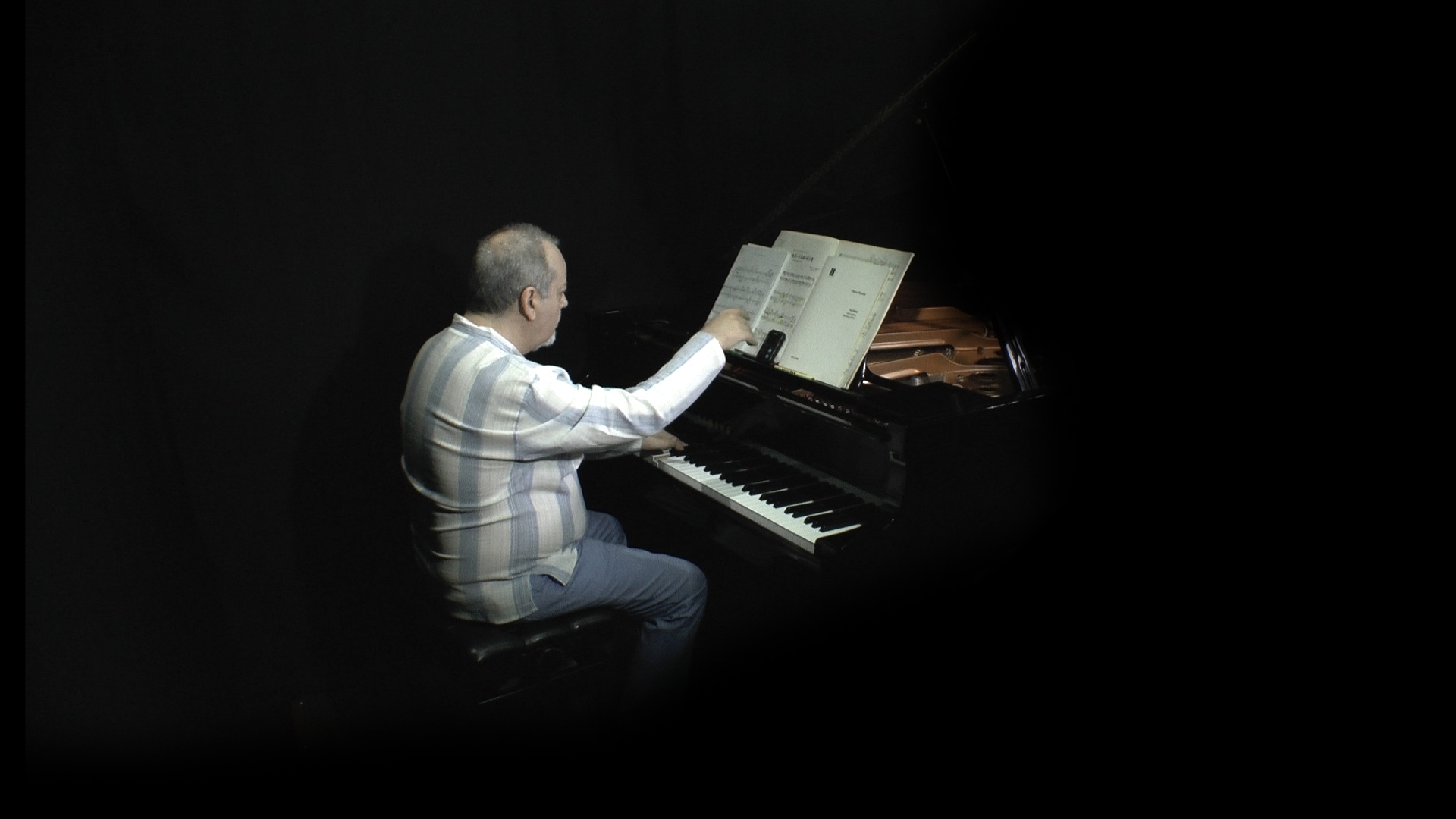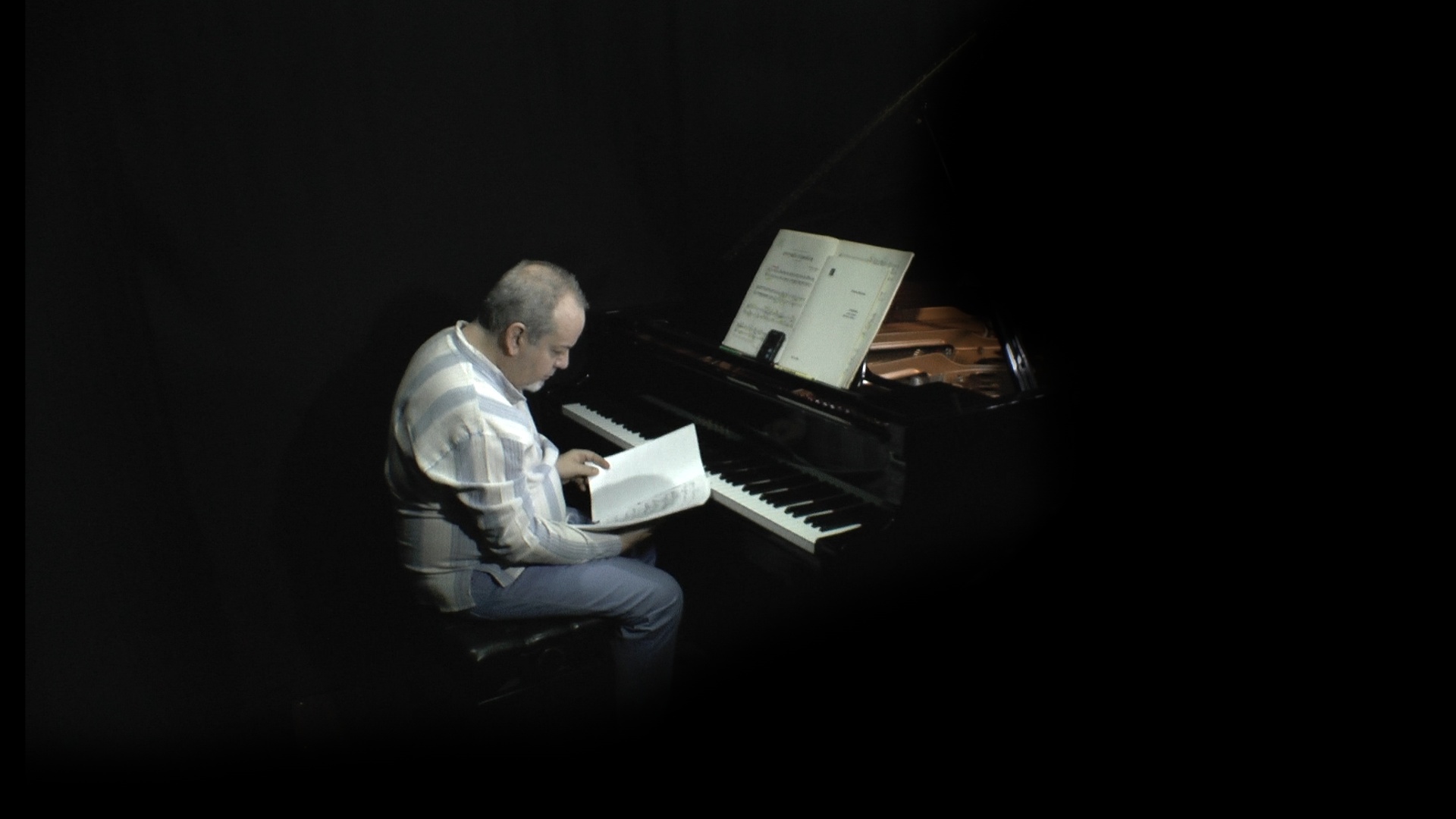
Pierre Boulez (1925-2016)
Iannis Xenakis (1922-2001)
Selected Piano Works


|
Pierre Boulez and Iannis Xenakis, both lived around the same dates, Boulez 1925 - 2016, Xenakis 1922-2001, and in the same country (France). Both are revolutionary, incisive, sharp and no-compromise artists. Both attended the musical analysis class of Olivier Messiaen at the Paris National Conservatory, but they have totally different approaches to music composition. Their backgrounds are very distant. Boulez got a "normal" yet top-level musical education; early schooling with piano lessons and the Conservatoire de Paris with Olivier Messiaen. Xenakis on the other hand had more a "cultivated" and brilliant child's, science oriented education rather than a "talented musician kid" kind of one. The Greek composer turned to be a successful architect and worked in Paris at Le Corbusier's office. While Boulez was focused on to expand and integrate "total serialism" in the "new" music composition style to each component: pitch, rhythm, durations and metrics as well as dynamics and even instrumentation, therefore breaking with what he called "the post-Romantic" Schoenberg style, Xenakis, probably because he was an architect, was more interested for ways to design a music composition like an architectural work. Xenakis aimed to attain structural, compositional integrity by shaping the "sound" as "lines", "clouds", "masses in motion in a three-dimensional space", all definitions and terminology he brought from his architect background to music composition. From this point of view, the Greek architect-composer may be closer to Ligeti than to Boulez. Both Ligeti and Xenakis wanted to shape their musical universe by acting on its outer design while Boulez considered the outer aspect, the "envelope" as he called it, more as a result from the structural design of its inner components. Xenakis, again in parallel with Ligeti, declared that the inner elements cannot be perceived by the listener, in complex polyphonic parts, in their structural organization, so the composer has to focus on their overall shapes, motions and transformations. Boulez, on the opposite side, declared that this approach is a kind of laziness from the composer's stand point and even though each component voice or part cannot be distinguished in complex sections it ought to be, nevertheless, masterfully designed and strongly structural. Even if it is only for the analyst's sake. However, the above classification as "Xenakis: overall designs versus Boulez: intrinsic (serialistic) design" should not be taken too sharply. Even in the earliest and most "integrale-serialistic" works: the period 1940 to late sixties; "Structures" for two pianos, piano sonatas N.1 and N.2, "Le marteau sans maitre" etc. Boulez was caring and designing with the utmost care what he called the "sound-envelope" i.e. the overall, exterior sound design as it is perceptible by the listener. Complexity Attained By Two Different Approaches The Xenakis approach to design music by shaping its "exterior" elements led him promptly to use the computers. With this "new" machine, he was able to draw the "blueprint of a musical composition" and decided on criteria for picking out notes in order to create that specific "line" or polygonal shape he had in mind. He could then "feed" the machine with proper perforated cards, wait for the computation and get the listing of each particular note he then transcribed to music paper. That convenience was not available for Boulez, programming a complex serialistic web for even the simplest instrumentarium was practically out of the question with the limitations of the computer programming languages of the time, mostly machine code, and limited access time to the machines. However, in the late seventies Boulez did some compositional work, in IRCAM with the use of computers. The Results As the result of those two very different approaches to music composition by two giant composers we have here two kinds of superior piano works. In the works by Xenakis featured, Evryali describes better the methods of the architect-composer. The lines, shapes, contours are designed with such an elegance and creativity that it may be even more effective visually than aurally. They are connected with dynamics and pedaling just like colors added to an architectural design. The listener must somehow "connect" his ears and his "inner vision" and attempt to "see" all that beauty, almost like a transposition of antique Greek aesthetics into the sound universe of the twentieth century. Herma, on the other hand is somewhat closer to the serialistic approach. It uses pitch-sets (ensembles), an idea similar to pitch-classes. Elements are labeled as "A", "B", "C" and "R" where "R" is the total ensemble of all pitches on the piano. The composer uses known mathematical set operations and calls that music "Musique Symbolique".
Selected Pieces for the Piano Pierre Boulez: Piano Sonata N.2 (1948) Major work of the composer's early style, it is also a landmark piece of twenty first century piano music. Premiered in 1950 by Yvette Grimaux this Sonata is stupefying as an accomplishment of a young composer aged 23. Even though molded in the classical Sonata model it displays an amazing novelty in its rhetoric. Showcasing a high rhythmic complexity, probably inspired by Messiaen's researches it also distinguishes itself by its departure from the Schoenberg concept of the tone-series. Here, sonic cells create "rhythmical themes" and make, as the composer pointed out, a large step towards the "total (integral) serialistic" world for the pieces to come. The first movement: "Extrêmement rapide" (extremely fast), still shows, in its boundaries, the well-known sonata-form. However, the contrast between a "motivic" ecriture where themes are distinguishable by their characteristic contours and "a-thematic" sections define, more than anything else, the overall form. Where some authors find reference to Beethoven with the trill "motive" present all through the work, the similitude seems very far-fetched to me. However, the citation of the notes-theme: B-A-C-H is very apparent. Interesting to note that, in regard with large, dense polyphonic sections, the composer wrote in the foreword: "all parts (in the polyphonies) are to be played with equal intensity, there is no "primary" or "secondary" parts." "Lent" (slow), the second movement uses of the principles of "Tropes", a typical Boulez notion to be widely used in the third sonata. It is similar to a variation. A large "disclosure" (development) from a "cell" of often modest dimensions. What distinguishes "Tropes" from the known variation procedures? Boulez says: "this is not a mechanical variation procedure. Rather, an amplification of tiny cells, which constitute the primary text, [they are] a more "organic" development [form]." This movement also features the idea of musical "parenthesis": the rupture of a (continuous) development by the apparition of a musical text of foreign origins, i.e. a text not issued from the material at hand. A lengthy "Scherzo" like third movement, "Modéré, presque vif" (moderate, almost lively), probably composed before the others, shows even more clearly the distance from the Schoenberg-ian concept of the tone-series, specially between its "main" portions and its (multiple) "trios". Specially the last one, "movement dédoublé" with its extreme polyphonic complexity breaks even more sharply with the Austrian master's concept of tone-series limited to pitch organization only. "Vif" (lively) is the "Finale" movement and makes a sort of synthesis between the first two ones, but making the original constituents unrecognizable and still opposing them in an ecriture alternating between thematic and, seemingly "a-thematic" one. There is even a fugato-like section ("Trés modéré mais sans trainer") with a theme made of five highly individual elements which are to be dispersed to "feed" the upcoming development. The movement which opposes extremely contrasted sections as soft and slow with strong, brisk and fast is not without analogy with a "Rondo". The coda ("Lent") will then make a last reference to B-A-C-H, kind of wink to a past which is left forever. Pierre Boulez: "Incises" for piano (version 2001) Incises, first composed in 1994 and revised 2001 is closely related with another but multi-instrument (i.e. chamber music) piece: Sur Incises. A long distance in time separates the Third Piano Sonata (1955 - 57 revised 1963) and the following piano work by Boulez Incises (interpolations). Contrasting textures like repeated notes, uniform rhythms interrupted by melodic lines or interjected chords over held notes or harmonic resonance chords/notes constitute the main aspect of the composition. The opposition between what the composer calls "temps strié" (regularly subdivided time/rhythm; a metric based on a regular impulse) and "temps lisse" (where no regular impulse can be recognized) is the most striking aspect of Incises. The "sister-piece" of Incises: "Sur Incises" is composed few years later. A two-movement work for three pianos, three harps, and three percussion parts. The material of Incises is distributed to the harps and percussion, and they are deployed across space by spreading the three groups apart in the performance area (the stage). Tim Page on a performance of the piece wrote: "Incises is charged with a bright, cold, hard brilliance, like a spray of crushed ice. It is dense with events - even when it is silent for a moment, Boulez's music never really 'rests' - but also far more generous in its emotional expression than much of his earlier work." It is actually very interesting to compare and see the changes and the evolution of the composer, between the Second Piano Sonata (1948) and Incises (2001). More than half a century separates the two major works. I agree without reserves with Paul Griffiths, who mentions Debussy's L'isle joyeuse in Sur Incises. Similar energy, vitality, brilliance, and I agree much less with others who claim to see echoes of Stravinsky's Les Noces or Bartok's Sonata for Two Pianos and Percussion. Iannis Xenakis: "Herma" for piano (1961) Premiered by the dedicatee Yuji Takahashi in Tokyo, 1962, Herma is Xenakis' first piece for the piano solo. Herma means connection, but also foundation and embryo. A new step in the composer's line of work is applied here. The mathematical set theory will be the basis for the upper structure of the piece. The procedure will be re-used by the composer in Eonta (1963-64). Symbolic music as defined by the composer, the composition is based on transformations between a reference-set defined as "R" which includes all the pitches of the piano and three sub-sets,"A", "B" and "C", defined in their relations to the idea of "sound-clouds" again an original concept by Xenakis. The "sound-clouds" are defined as follows: "A": the opposition between "clouds" and a linear ecriture; "B": "clouds" without pedal; "C": very "short clouds" with pedal. The first exposition of those clouds is followed by their "complement": sounds which do not belong to any of them. The following operations are directly notated in the score using the set-theory notation as intersection, union, negation, complementary etc. Xenakis makes a distinction between the, atemporal, abstract conception of the music ("hors-temps") and its transcription as a music score: its temporal realization ("en-temps"). The scale of intensities from "ppp" to "fff" is employed to clarify the perception of the a temporal concept during the pieces "temporal rendition" (i.e. performance). Extremely difficult to perform, mostly due to its large dispersion over the keyboard range, the piece is a constant rise of tension until the most dense last page in "fff". Iannis Xenakis: "Evryali" for piano (1973) "Sea at far" or "Medusa", Evryali (1973) was first performed at Lincoln Center by the dedicatee Marie-Françoise Bucquet, the year of its composition. Like Erikthon for piano and orchestra (1974), Evryali uses the idea of "arborescences", ramifications to create "bushes" of melodic lines. Beginning with a punctual approach, one dynamic per note, the piece evolving by steps, swiftly leads to high intensity climaxes and, a common figure in most of the composer's works, alternates between repetitive blocks of uniform or changing pitches and individual lines which depart in many directions, cross or join each other. If one cares to abstract from the actual notes, the musical score looks like an architectural blueprint. Lines, shapes, volumes are almost discoverable to the naked eye. A masterly crafted, three dimensional design of incredible beauty emerges. A twentieth century vision of Greek aesthetics transcribed into the field of music. |
||||||||||||||||||||
 |
||||||||||||||||||||
|
|
||||||||||||||||||||
|








